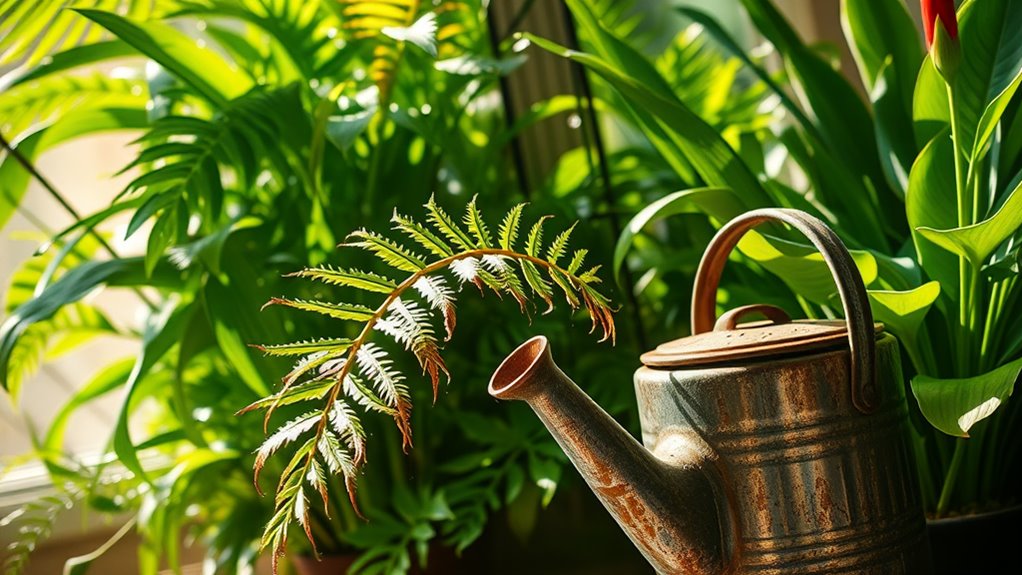The Mistake That Was Killing My Indoor Plants
Is it possible that your good intentions are harming your indoor plants? Overwatering is a common pitfall for many plant owners, often leading to serious issues like root rot. Without checking soil moisture regularly, you might unknowingly drown your greenery. Understanding the right watering techniques, along with proper drainage and environmental factors, is vital. Discover how addressing these aspects can transform the health and resilience of your indoor garden.
Overwatering Issues
Although watering your indoor plants is essential for their health, overwatering remains the most common mistake that can lead to root rot and other detrimental issues.
It’s vital to check soil moisture before watering; if it’s still damp, hold off. Ensure your pots have proper drainage.
Monitoring your watering habits will help prevent this indoor plant mistake and keep your greenery thriving. Additionally, understanding optimal light for your plants can also significantly influence their overall health and reduce the need for excessive watering.
Inadequate Light Conditions
When indoor plants don’t receive adequate light, their growth can be stunted or deformed, leading to weak and unhealthy foliage.
To ensure your plants thrive, consider the following:
- Positioning: Place plants near windows or in well-lit areas.
- Light Type: Use full-spectrum grow lights when natural light is insufficient.
- Duration: Aim for 12-16 hours of light daily for optimal growth. Additionally, maintaining optimal humidity levels can also enhance plant health and promote robust growth.
Poor Soil Quality
Inadequate light conditions can exacerbate issues caused by poor soil quality, leading to further complications in your plants’ health.
If your soil lacks essential nutrients, isn’t well-draining, or has compacted particles, your plants can’t absorb water or nutrition effectively. Analyzing soil composition and amending it with organic matter can significantly enhance your indoor plants’ well-being, promoting vigorous growth and overall vitality. Additionally, implementing essential techniques for soil preparation can improve soil structure and nutrient availability, ultimately supporting healthier indoor plants.
Neglecting Humidity Levels
Humidity levels play a crucial role in the health of indoor plants, as many species thrive in environments with higher moisture content in the air.
To ensure optimal humidity, consider these strategies:
- Use a humidifier to maintain consistent moisture levels.
- Group plants together to create a microclimate.
- Place water trays near plants to naturally increase humidity.
Neglecting these practices can lead to plant stress and mortality.
Ignoring Pest Problems
Even the healthiest indoor plants can suffer if you ignore pest problems, as infestations can quickly lead to serious damage or plant death.
Common pests like aphids, spider mites, and mealybugs can weaken your plants, disrupt nutrient flow, and cause leaf drop.
Regularly inspect your plants for signs of infestation, and address any issues immediately to ensure their health and longevity. Implementing natural pest control methods can help protect your plants while promoting a healthier growing environment.

